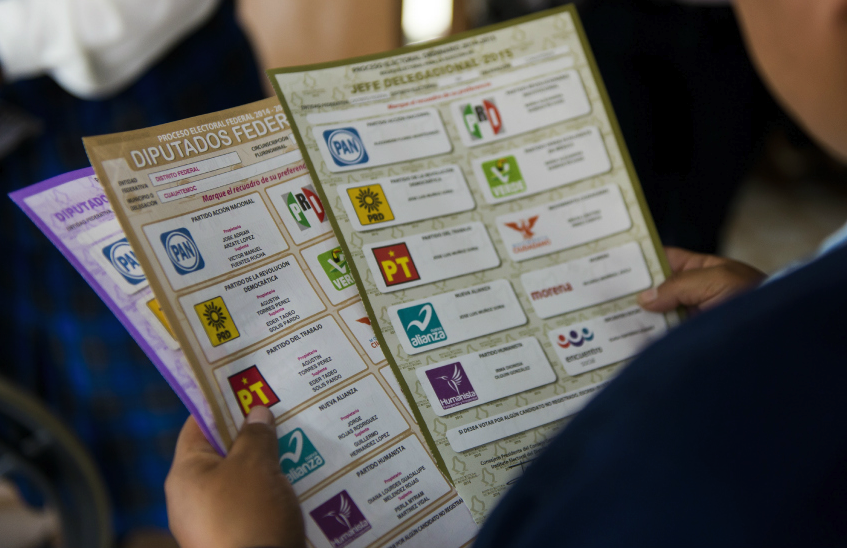On June 2, 2024, Mexico will hold the largest and most violent election in its history. For different reasons, this date could be considered a watershed in the country’s history; however, three dimensions reduce the options that citizens have to choose from.
1-The fallacy of the social model
The first is what I would call the social model fallacy. This fallacy has been fed by each of the three main political platforms that are competing for the popular vote. The presidential candidates are the most visible face of a discourse, but what does it consist of?
Candidate Claudia Sheinbaum has based her campaign on the celebration and continuity of the social model implemented by the current Mexican president. A model that sells itself as progressive and humanist, but in practice favors what she criticizes so much: the concentration of resources on the individual, in this case, the recipient of social programs.
For her part, candidate Xóchilt Galvez has not been able to articulate a narrative with a clear critical position towards social programs, but neither does she defend an economic proposal for the various sectors of society that have felt displaced by those programs. This shortcoming identifies her with a model that has already shown its failure.
While it is true that candidate Álvarez Maynez has taken advantage of media platforms, such as debates, to present concrete proposals, it is also true that these either follow the current model, with the same individualistic result, or are proposals that do not sound good but are not viable in the short term.
Thus, although the three candidates want to present themselves as the champions of a social model that will take Mexico to greater levels of prosperity and progress, the truth is that there is currently no model that makes social justice a reality. Consequently, the electorate is left with no real options to decide.
2-The increase in political-electoral violence
The second dimension is the context of violence: more than 180,000 people have been murdered in the six-year term of López Obrador. Concerning electoral processes, the project Votar entre Balas (Voting among Bullets) of the organization Data Cívica reports this data on political-electoral violence throughout Mexico.
So far in 2024, at the time of this writing, a total of 59 candidates have been victims of some type of political-electoral violence: 22 of them have been murdered, 14 have received some type of threat, 10 have been kidnapped, 8 have suffered an attack, 4 have been attacked with firearms and 1 is missing.
If to this count we add officials, popularly elected authorities, party members and even political facilities, the number of cases of political electoral violence is increasing year by year: in 2020 we had 78, in 2021 there were 178, in 2022 it increased to 486, in 2023 we have the highest figure with 575 and so far in 2024 there are a total of 224 cases of political electoral violence.
Those most exposed to this violence are the municipal authorities: 76.5% of the total. One possible explanation is that, at the municipal level, organized crime may have more control of the territory by “deciding” who governs through this violence.
Political-electoral violence, especially at the municipal level, is becoming a trend whose result is that the election is settled before reaching the ballot box. Therefore, the electorate is left without the freedom to decide.
3-Political polarization
The third dimension is polarization. Another characteristic of the current campaigns has been the constant disqualification, mainly between the female candidates. Even in several of their radio and television spots, they have preferred to give space to the opposition candidate to point out her “lies”. The use of adjectives such as “liar”, “corrupt”, “narco-candidate” and other nicknames they have coined shows that the current electoral discourse is based on stigmatization.
It is no coincidence that candidate Claudia Sheinbaum does not look at any of her competitors during the presidential debates. This attitude shows that contemporary polarization is based on and practiced through stigmatization, which makes enemies of those who think differently and with whom it is not necessary to dialogue or reach a consensus.
The discursive content with which the current polarization is constructed has led to actions ranging from moral disqualification through “ingenious” adjectives to the withdrawal or obstruction of rights and freedoms by those who are considered adversaries by governments with authoritarian tendencies.
The stigmatization implied by the current polarization causes the other political actor to be seen as someone who does not deserve rights or freedoms. As a result, the electorate reduces its options to one polarization or the other.
The paradox of the largest electoral process in the history of Mexico is that the fury of violence, the fury of discourse, the fury of social injustice, the fury derived from polarization, leave us voters with no real alternatives to decide or, worse, at the time of voting we are left with only the choice of fury. We shall see.
*Translated by Micaela Machado Rodrigues from the original in Spanish.












